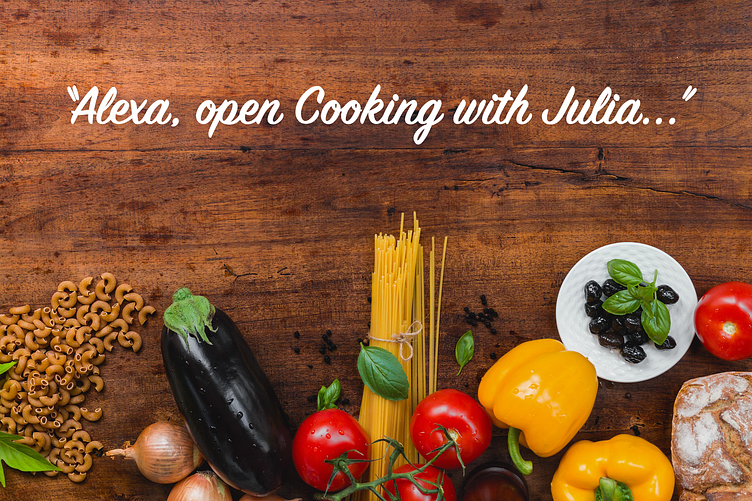Cooking with Julia
Overview: An Alexa skill for a kitchen assistant
Objective: Allow users to select from among several options for quick meals, then follow step-by-step directions to prepare the selected meal
Purpose and Context: This skill was created as part of my Voice Design course with CareerFoundry to demonstrate my mastery of UX Design practices and take my knowledge one step further
Duration: One month
Role: VUI Designer
Tools: Lucidchart, Alexa Developer Console, GitHub, Excel, Visio
USER PERSONA
I began to create this voice skill by determining who the target user audience would be. I chose a demographic of busy professionals age 25-50 and interviewed a handful of individuals who fit this category. Some of the participants had little to no experience using voice applications.
With their responses I was able to develop my User Persona. Most of the participants agreed that time and lack of knowledge were the main factors standing in their way of cooking for themselves. Even those who were familiar with voice interfaces required a simplistic and intuitive application.
SYSTEM PERSONA
In developing a voice interface you are creating a persona that will be a part of someone’s life. Personality plays a big role in how people feel about interacting with voice assistants. Based on feedback from my participants, I created Julia, an upbeat, knowledgeable, and patient kitchen assistant. She is young and fun, but she is as much a teacher as a sous chef.
DEVELOPING USER STORIES
User Stories help to identify user needs. They are short statements that sketch a situation where a successful interaction between a user and the product takes place. The discoveries made during this process where essential in the development of the systems flow.
CREATING SYSTEM FLOWS & SAMPLE DIALOG
With my User Stories in hand, I began to create the system flows that would determine how and what information would be needed throughout the conversational exchanges. Creating system flows gave me a full picture of every conversational option and helped me to uncover potential issues, such as, the user falling out of the loop of conversation and error handling. Sample Dialog helps guide you through the thought process.
It was helpful to first develop the information architecture of how different recipes and the relevant pieces of information about them would be related.
WRITING THE SCRIPT
With the conversational flow structured, I was able to turn each prompt and response into a dialogue. Taking into account issues of cognitive load and memory, I developed a dialogue that allows users immediate access to the most relevant pieces of information while maintaining Julia's personality.
USER TESTING
It was now time to produce the next level of prototype and to test the system with actual users employing the Wizard of Oz method. My goal was to assess the usability and satisfaction for users by focusing mainly on their ability to launch and understand the app, its value, and how to complete basic initial functions.
NEXT STEPS
After user testing of my first iteration, I discovered the need for more flexibility in the app for dietary restrictions and substitutions. There were also certain instances where the inclusion of a GUI would be invaluable to create a more seamless experience. Refining the interaction model through additional repeated testing will be needed.
In summary, when working through the problems typical of a VUI design process, I further developed my skills as a UX designer, and added new ones which are specific to voice.













